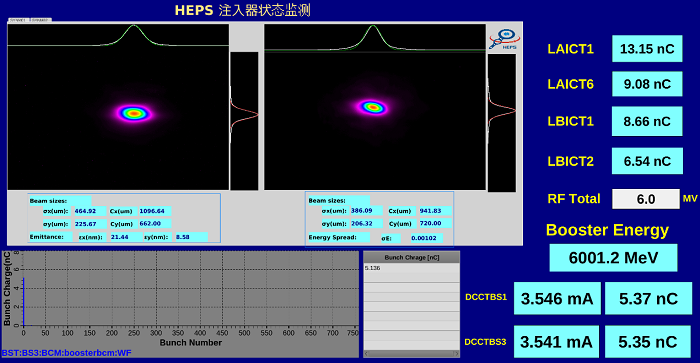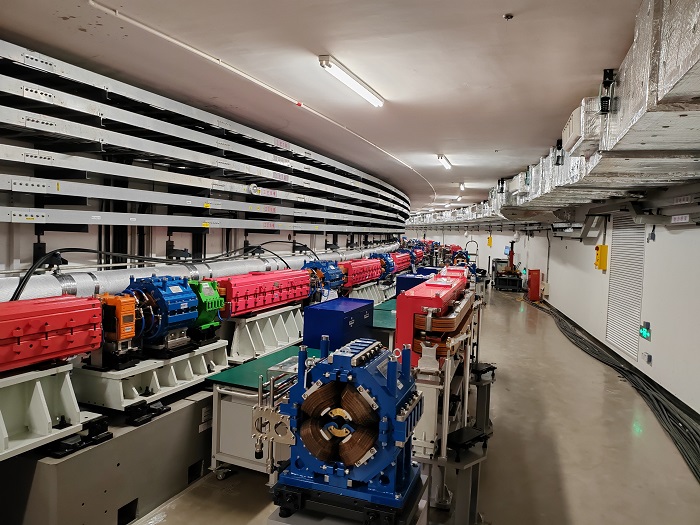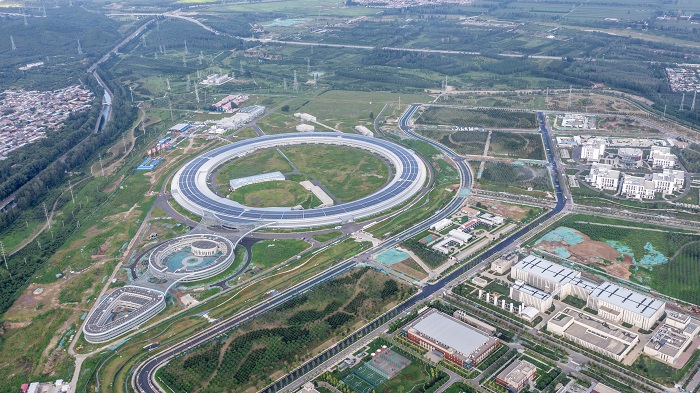HEPS Electron Beam Ramped Up to 6 GeV
The HEPS booster is about 454 meters in circumference and features a four-fold symmetrical FODO structure, with each super-period consisting of 14 standard FODO cells, two matching sections, and an 8.8-meter-long dispersion-free straight section. As the second accelerator and the injector for the storage ring, the HEPS booster captures the beam from the linac, ramps up the beam energy to 6 GeV, which is the same as that of the storage ring, and provides a high-quality electron beam for high-efficiency injection into the storage ring. Jiao Yi, the head of the accelerator physics team, said that along with the evolution of the design of the storage ring lattice and injection scheme, four versions of the booster lattice were successively proposed. Ultimately, a “high-energy accumulation” scheme was adopted for the booster design to solve a series of problems caused by the “on-axis swap-out” injection scheme of the storage ring.
Booster installation began on Aug. 8, 2022, and vacuum-sealing in the tunnel was completed months later on Jan. 13. With RF conditioning completed, commissioning began on July 25. The first electron beam circulated in the booster vacuum chamber and was ramped up to 6 GeV on Aug. 9. Project Manager Pan Weimin said that the good beginning for HEPS booster commissioning demonstrates that thousands of components, such as magnets, ultra-high-vacuum chambers and RF cavities, are working in sync, and the entire structure is aligned sufficiently well to guide electron trajectory. As a result, after months of performance optimization, the booster is able to produce the high-quality electron beam described above.
Over the past four years, all buildings have been turned over to installation, and linac commissioning has been completed. In addition, installation of both hardware in the storage ring tunnel and the beamline hutches has proceeded on schedule. As one of China’s key scientific and technological infrastructure projects during the 13th Five-year Plan, construction on HEPS began in Huairou Science City on June 29, 2019. The project is expected to be ready for operation at the end of 2025. Once completed, HEPS will not only be the first high-energy light source in China but also one of the brightest fourth-generation synchrotron radiation facilities in the world. HEPS will meet the urgent requirements for high-energy, high-brightness X-rays in original and innovative research in the fields of basic science and engineering science.

The high-quality electron beam achieved more than 5 nC of bunch charge at 6 GeV via the HEPS booster on Nov. 17, 2023.

Vacuum-sealing in the booster tunnel was completed on Jan. 13, 2023

An aerial shot of the HEPS project site in August 2023
Contact Information
Ms. JIA Yinghua
jiayh@ihep.ac.cn